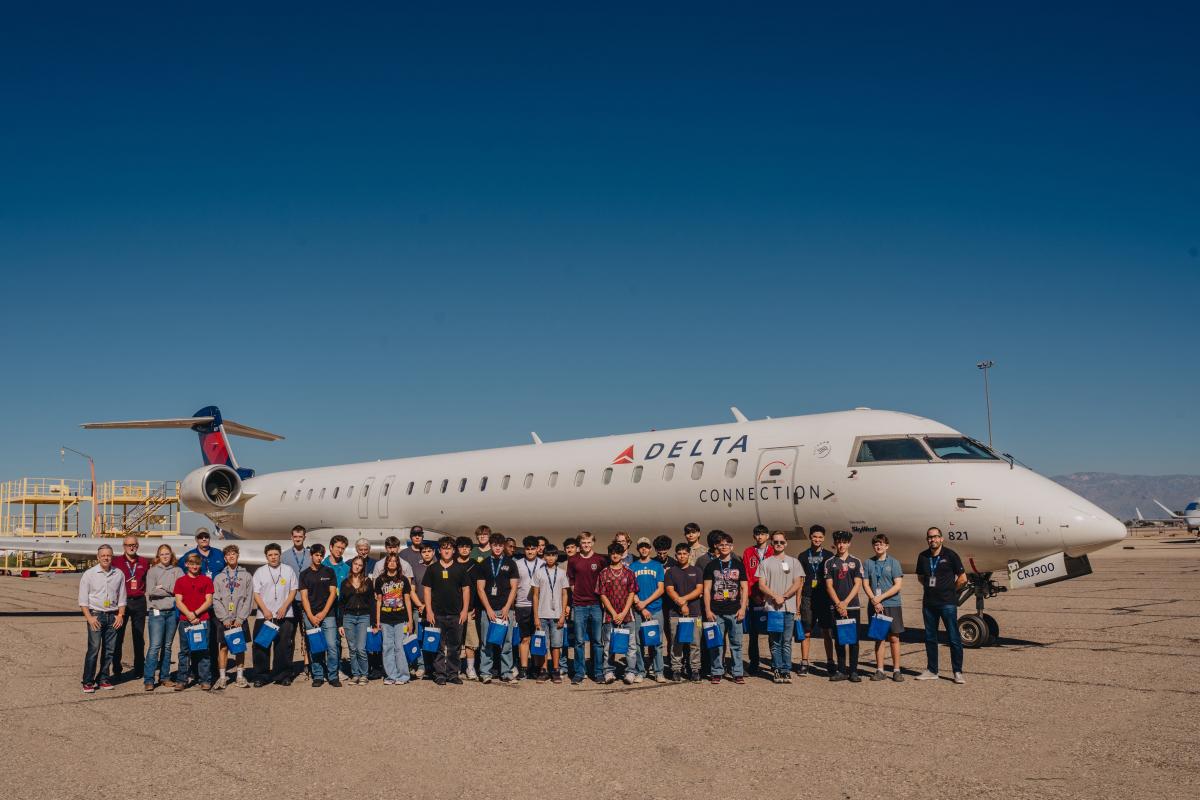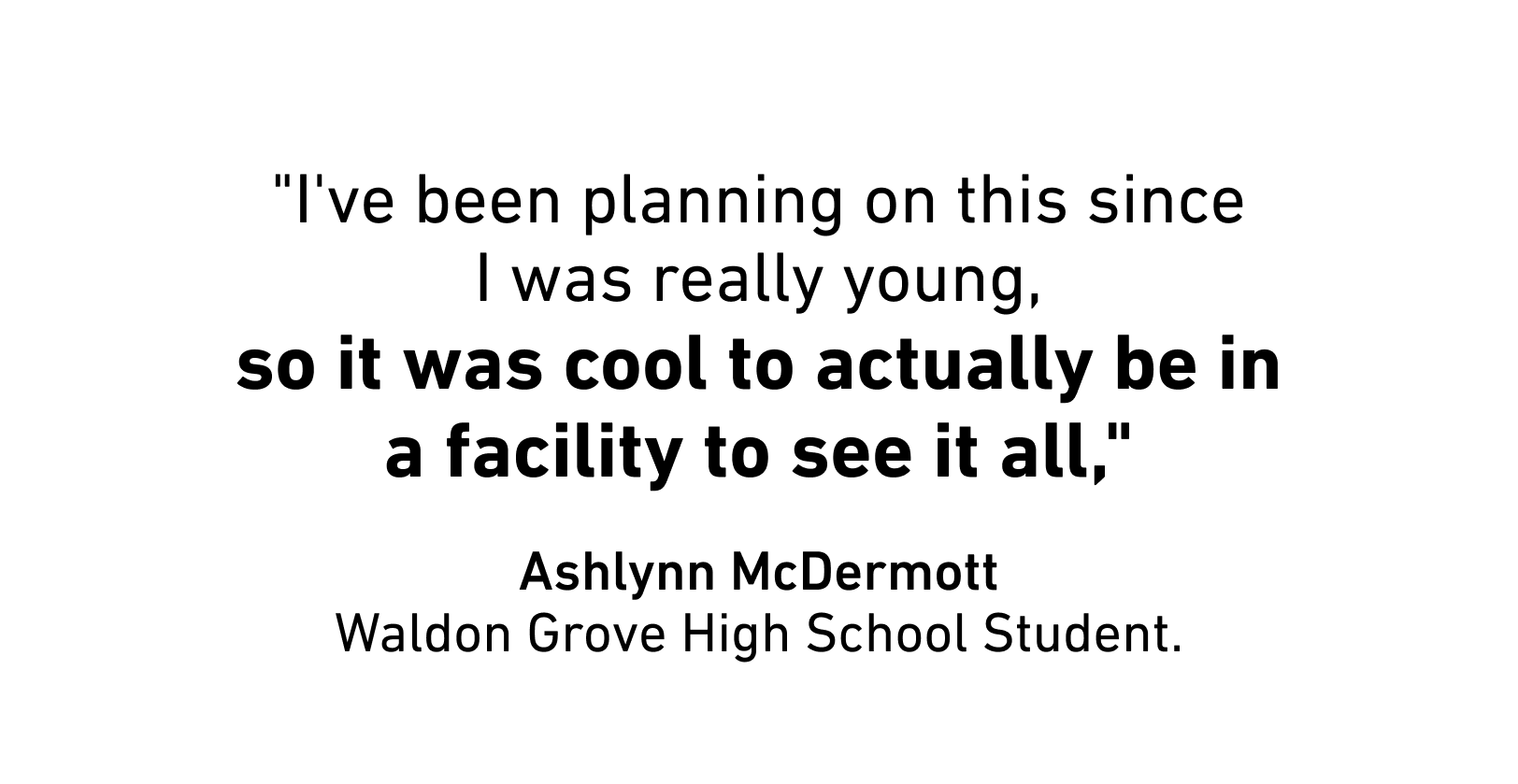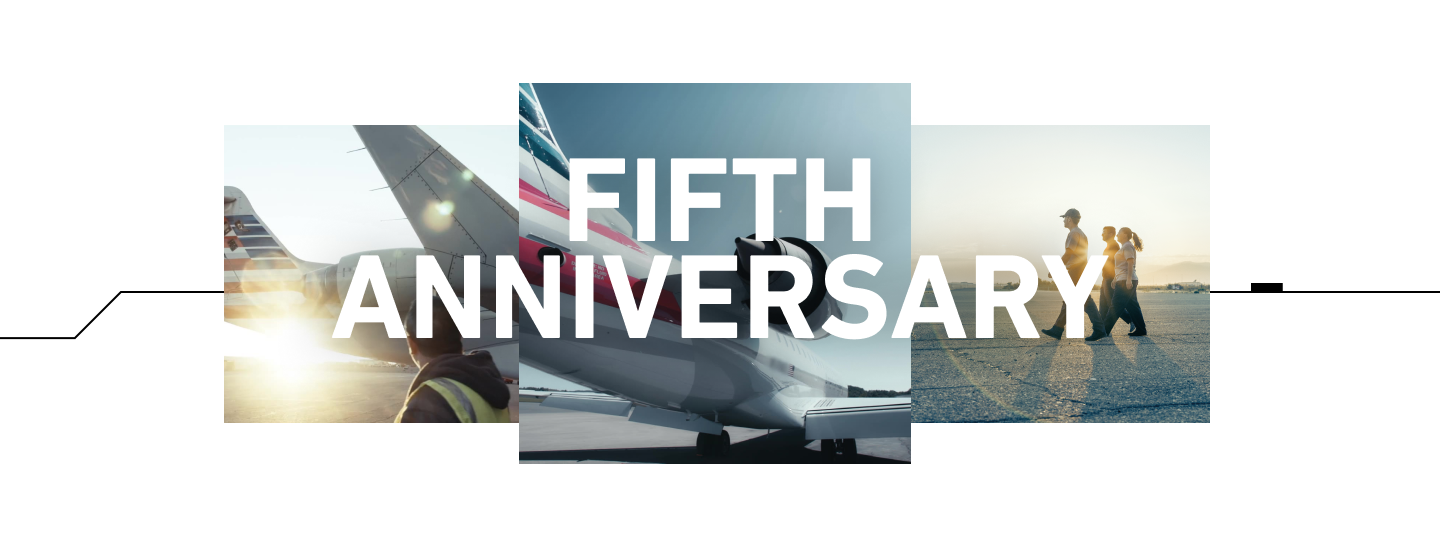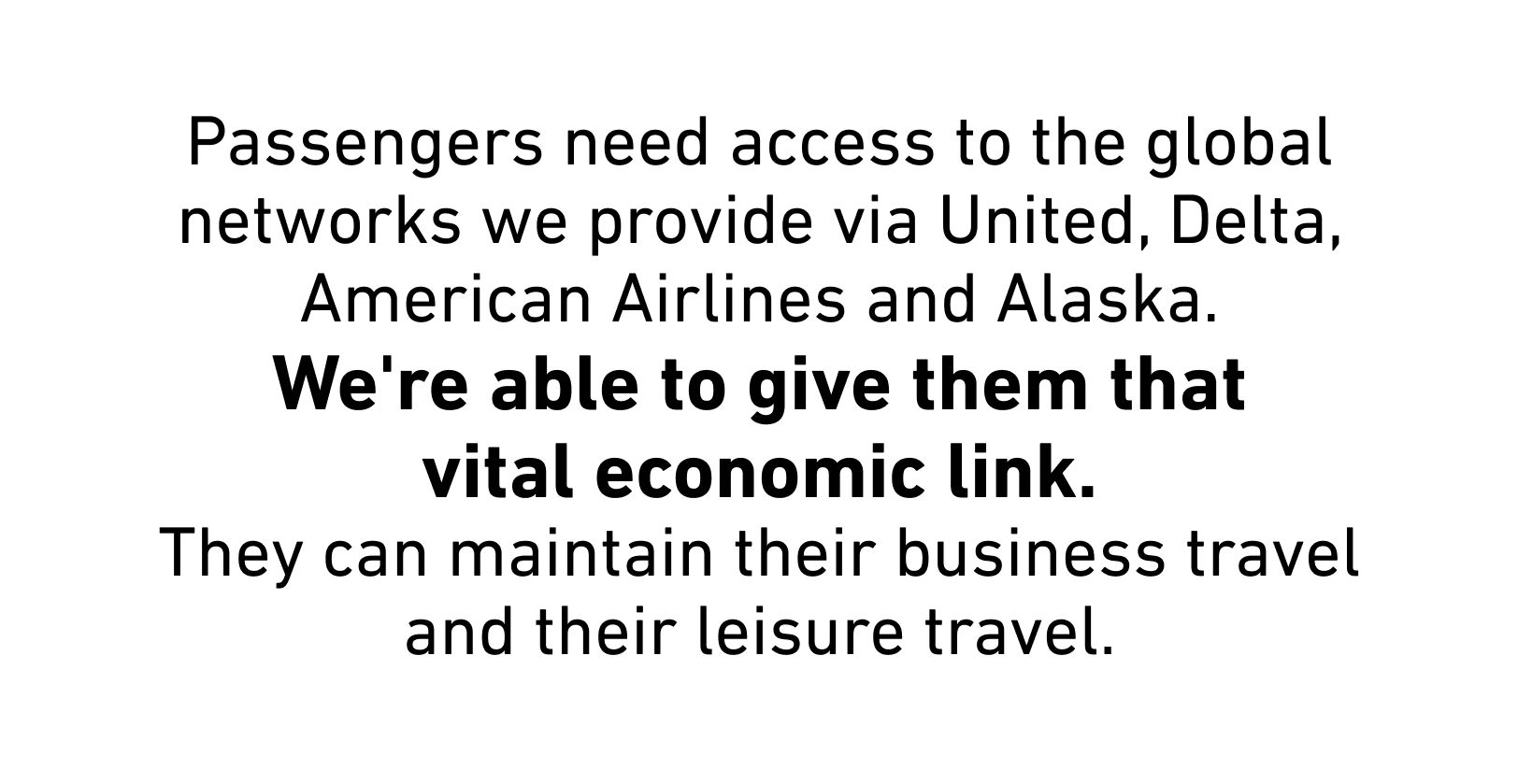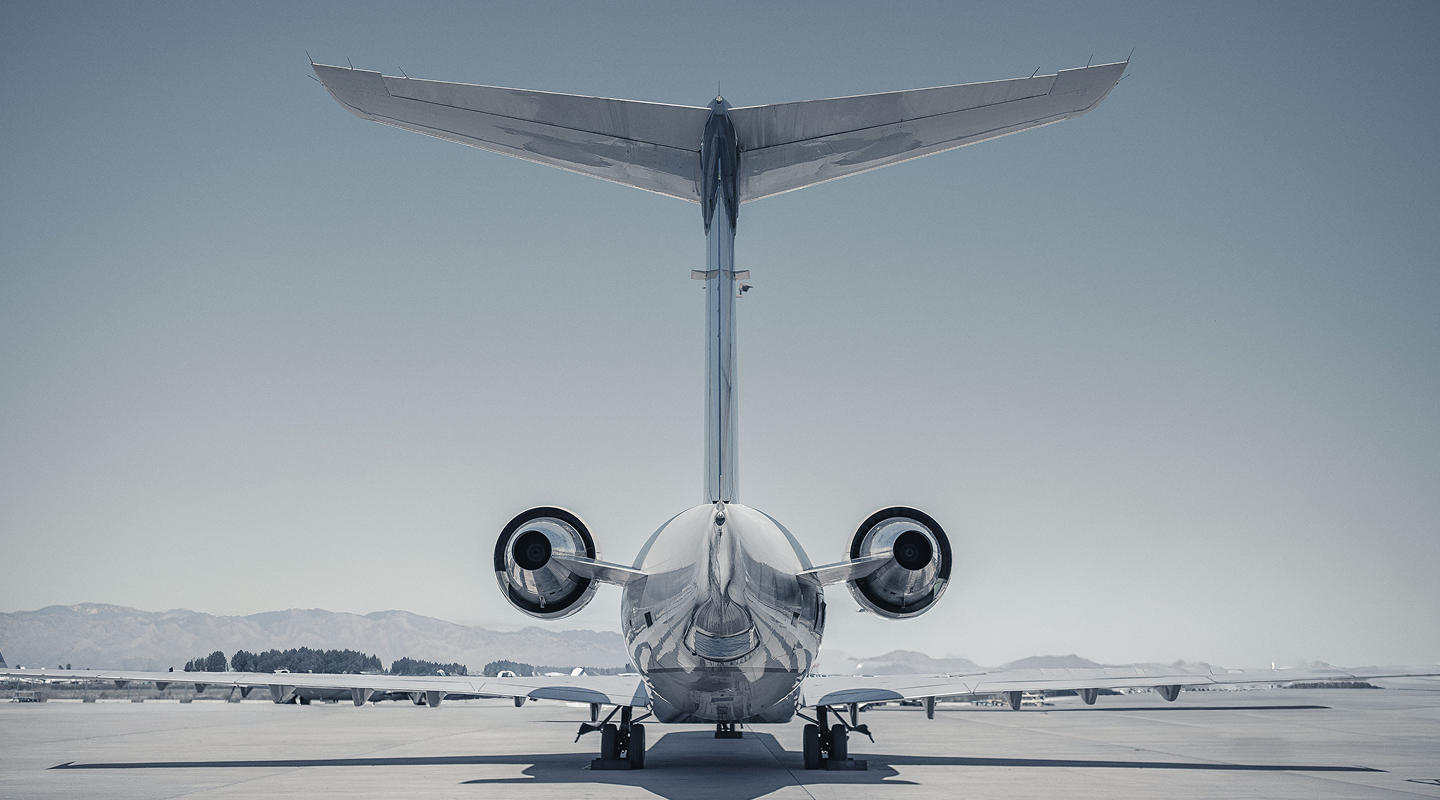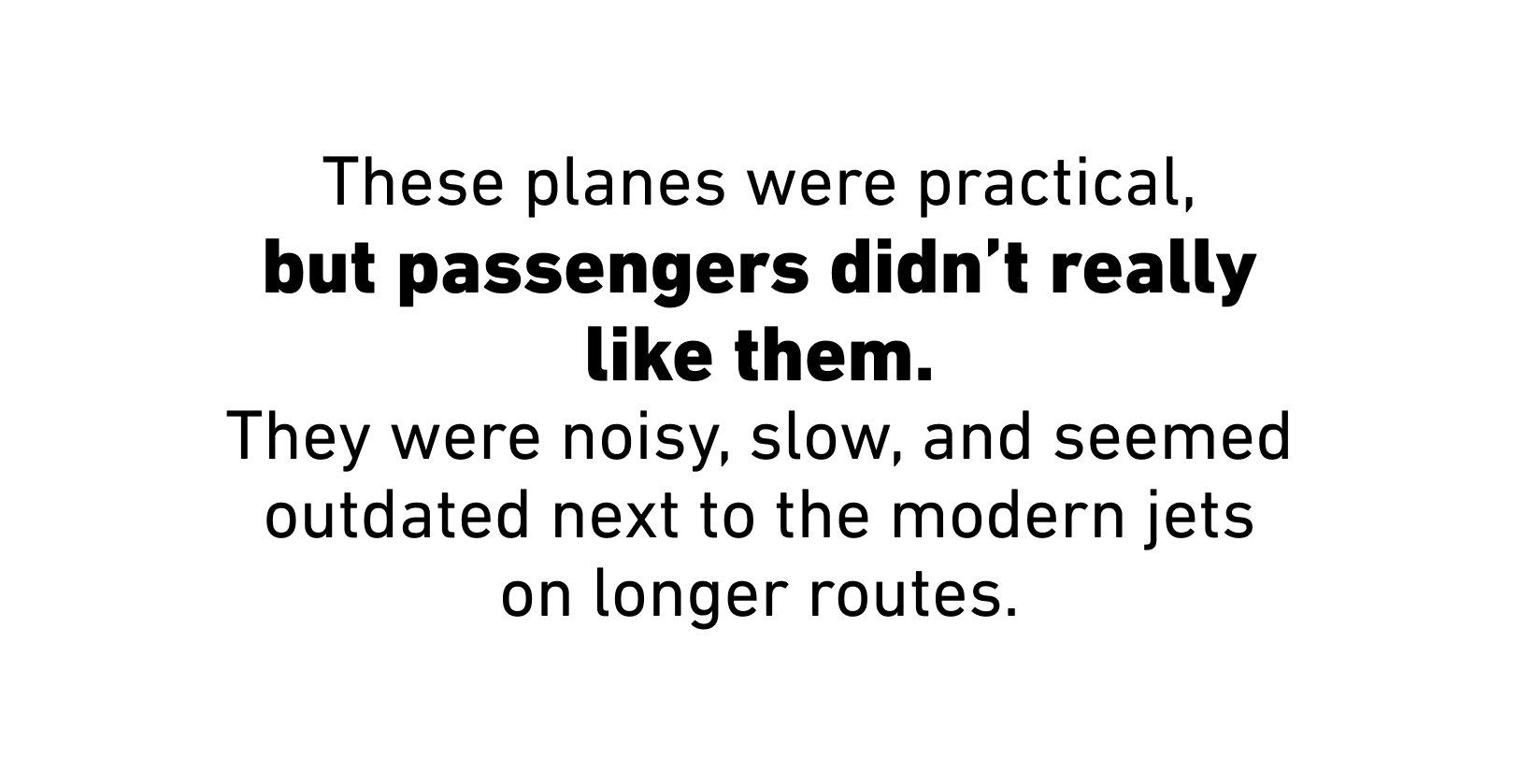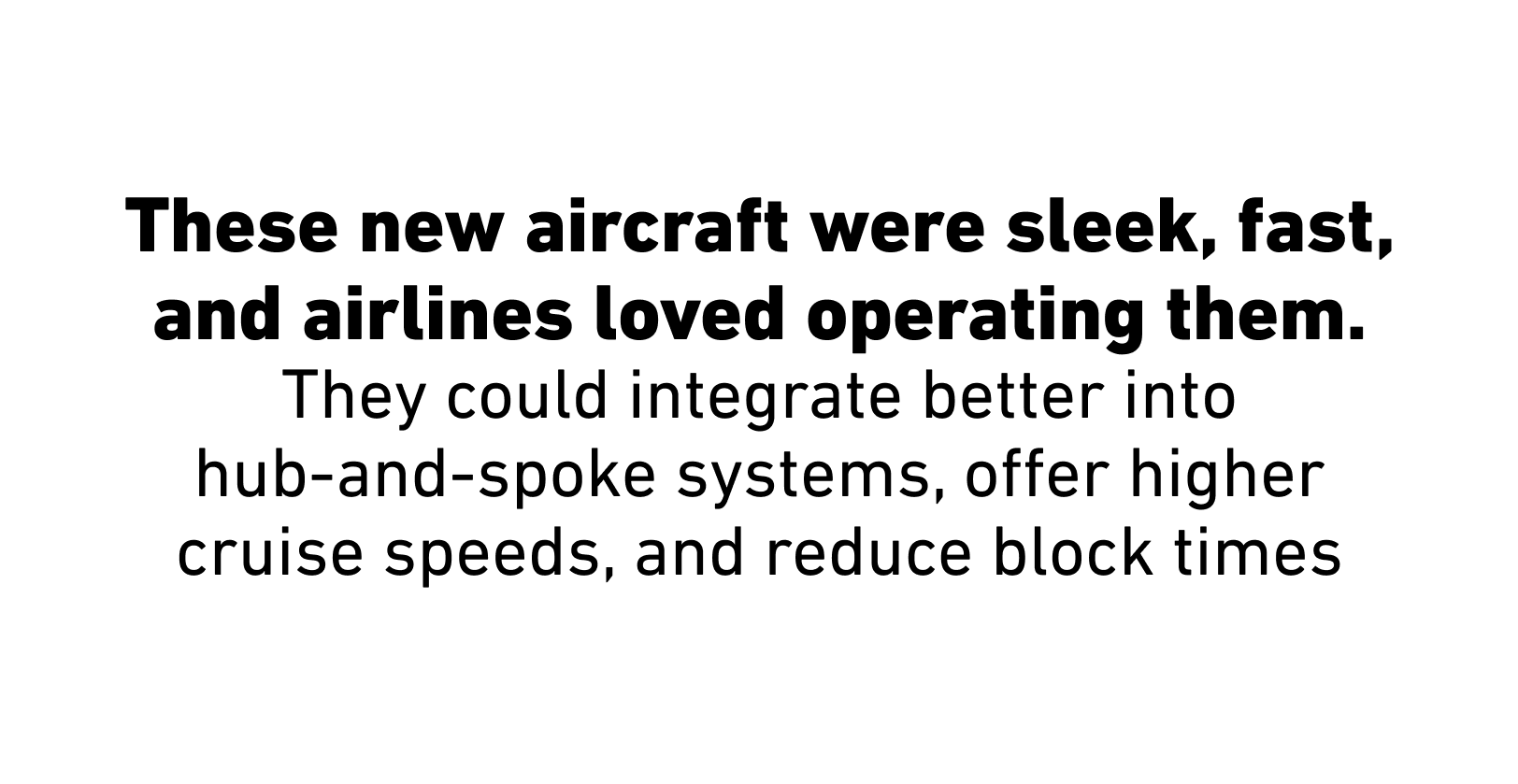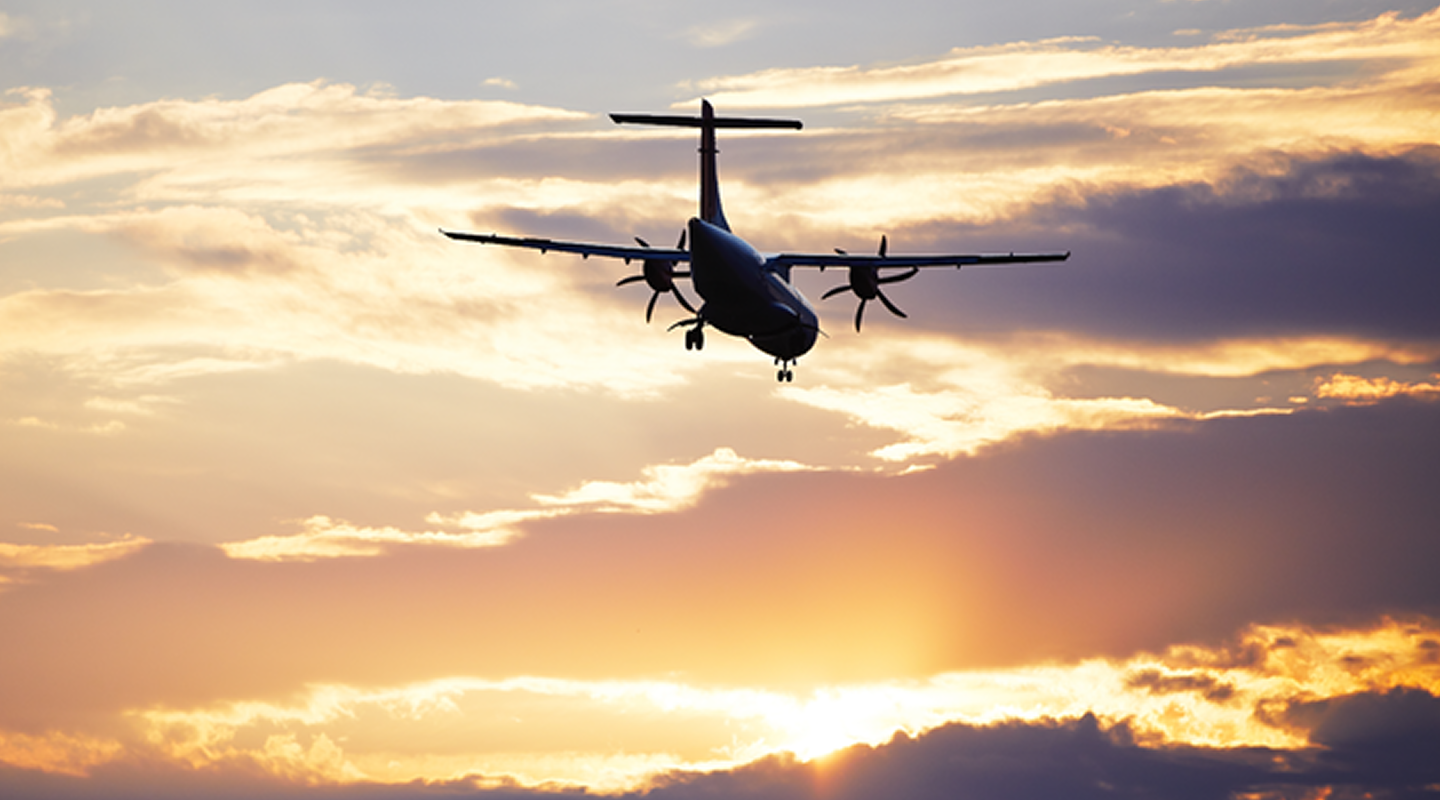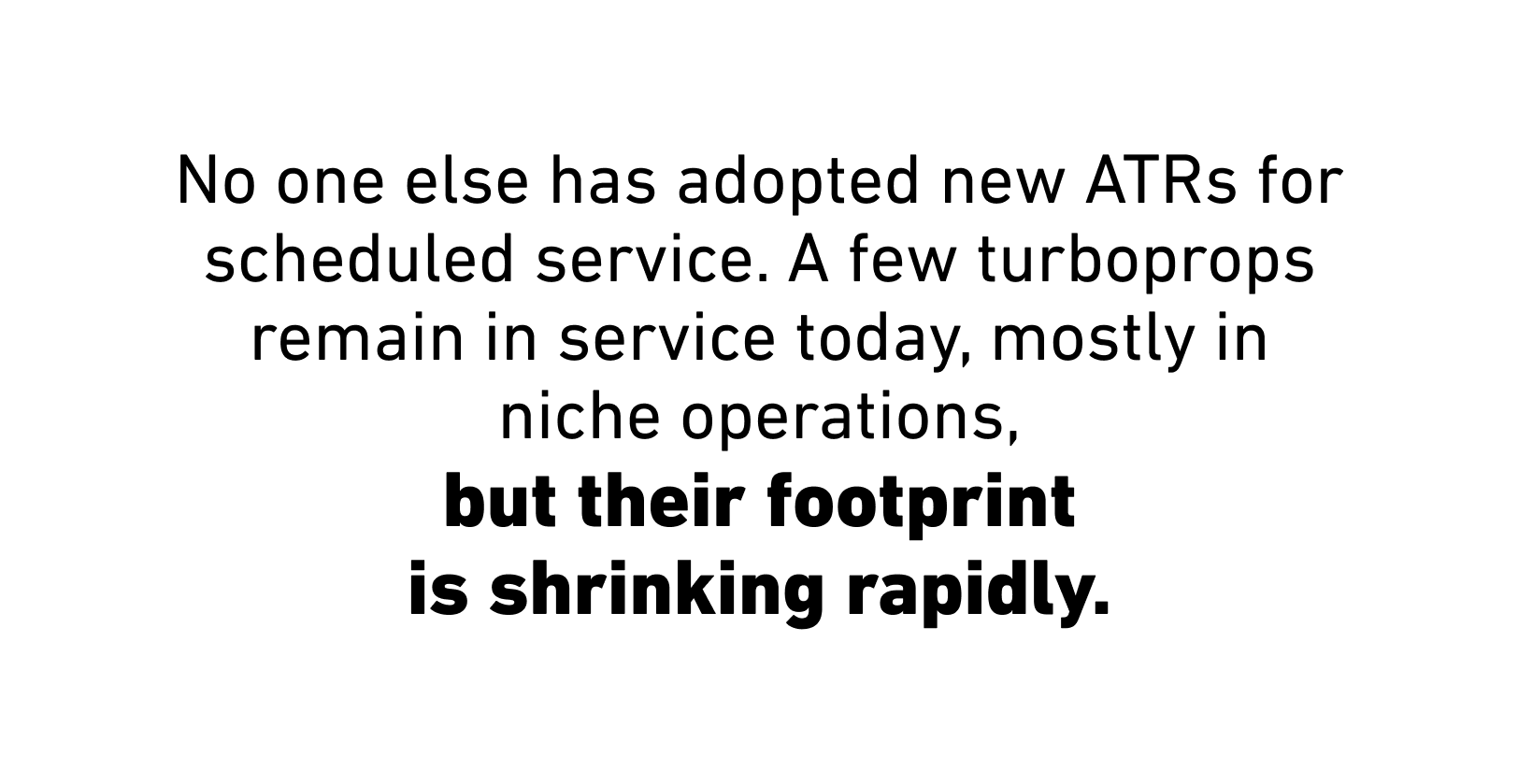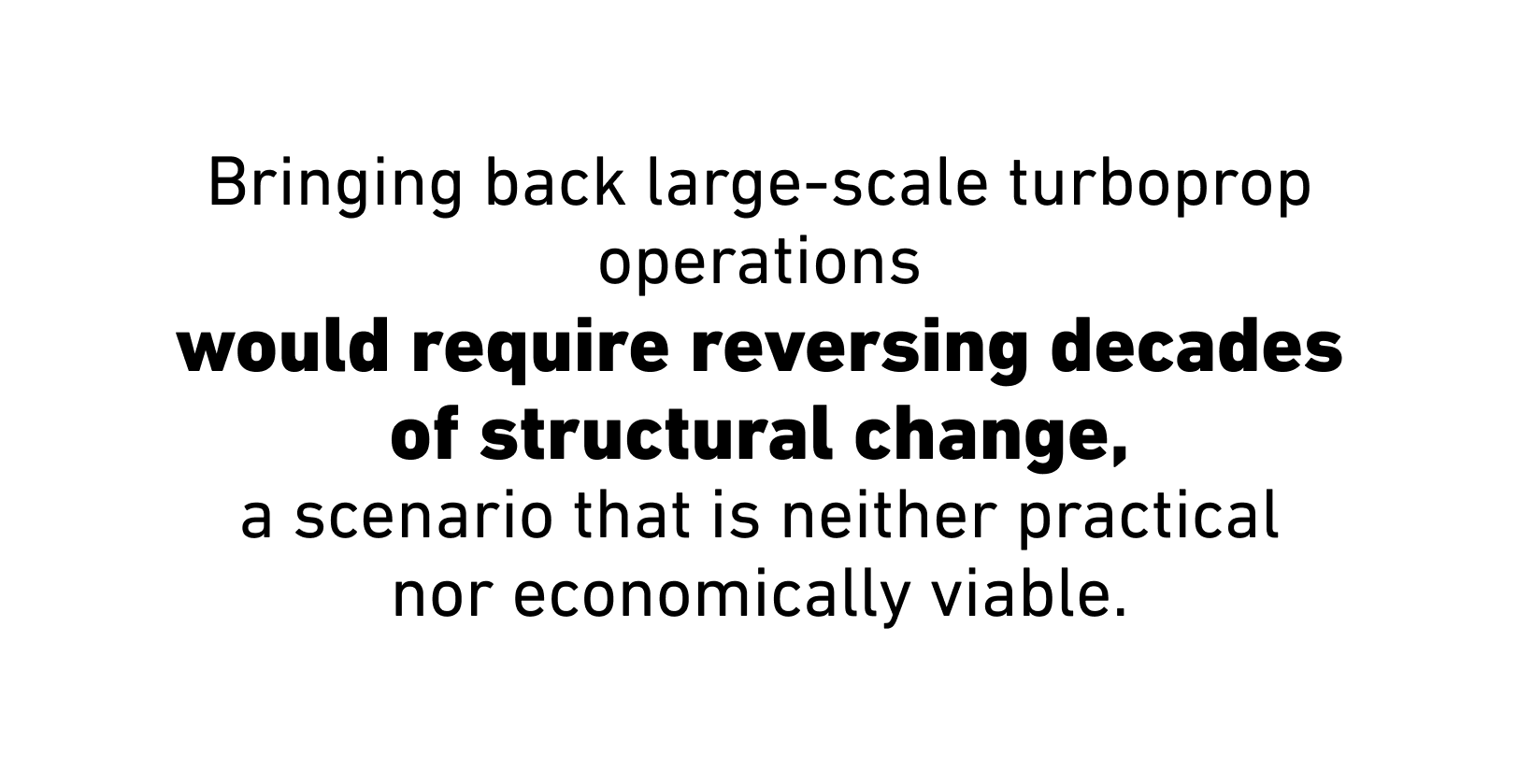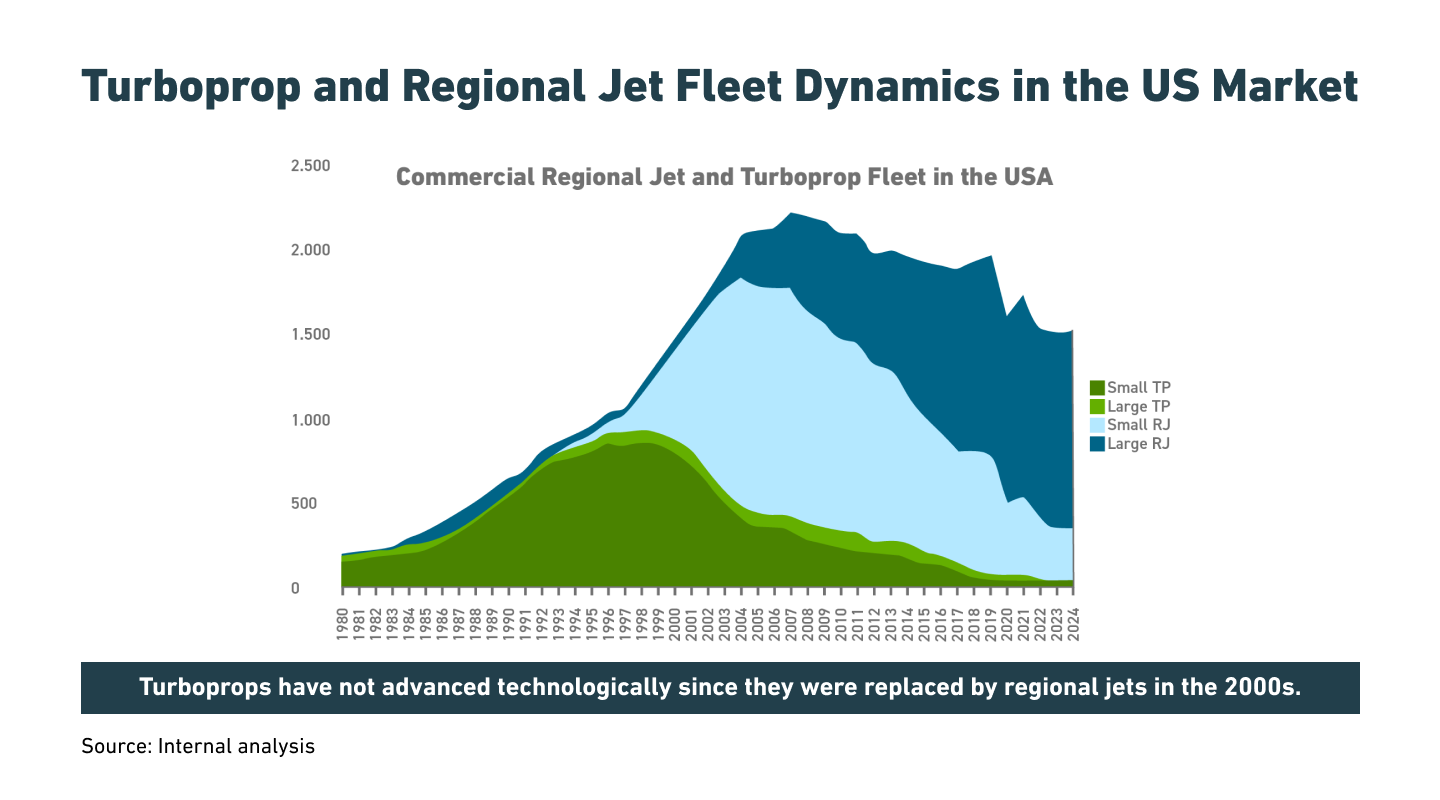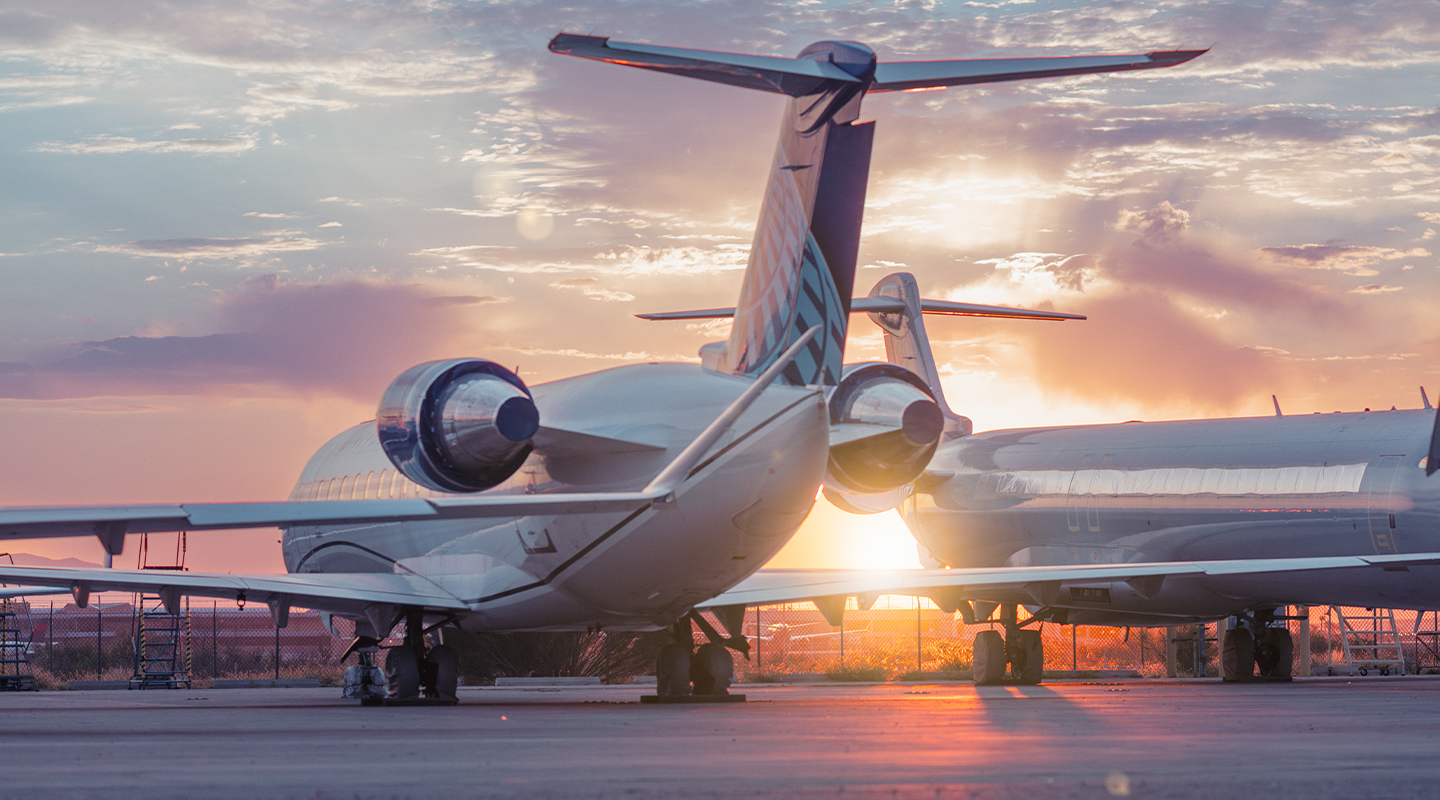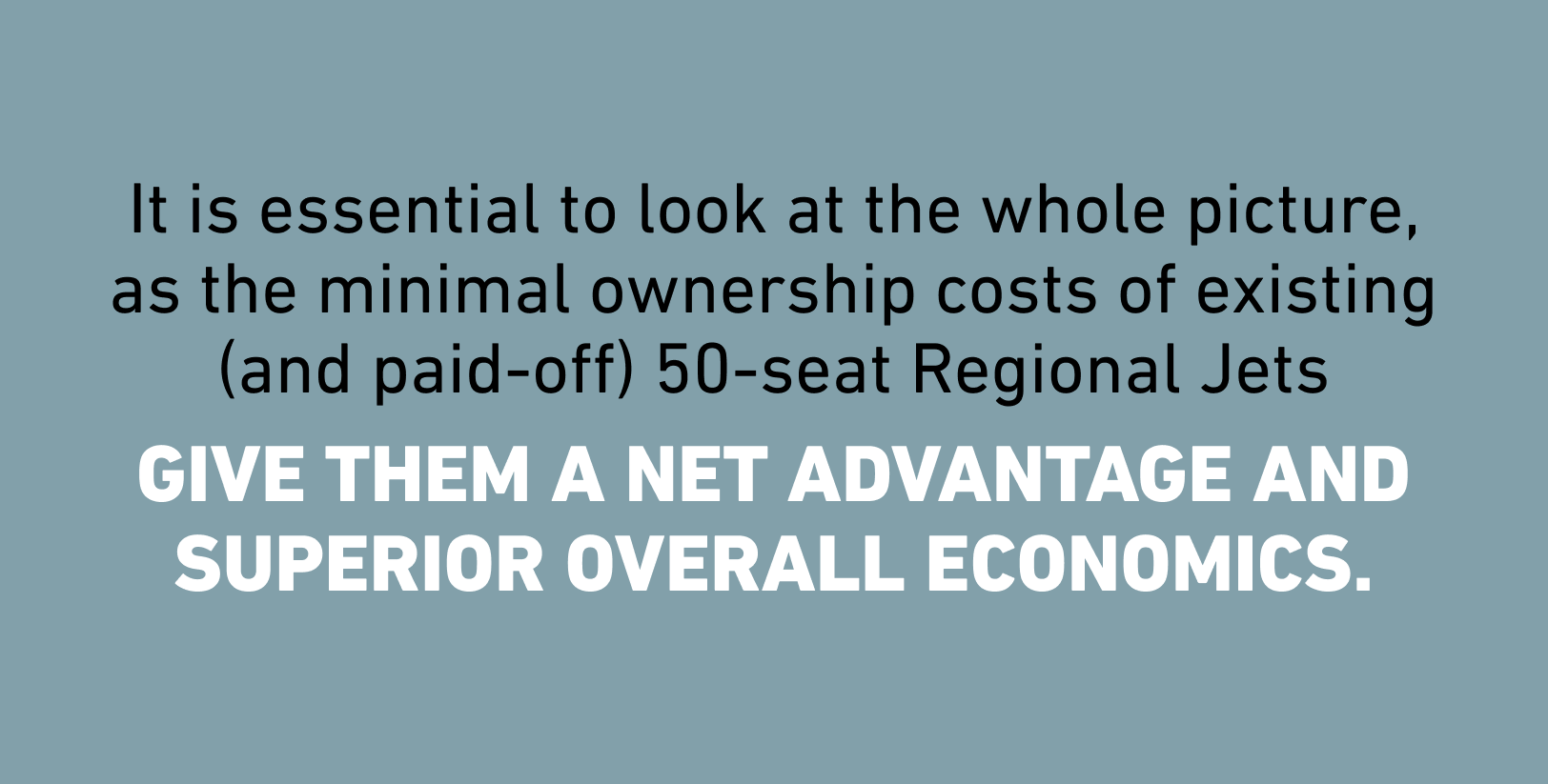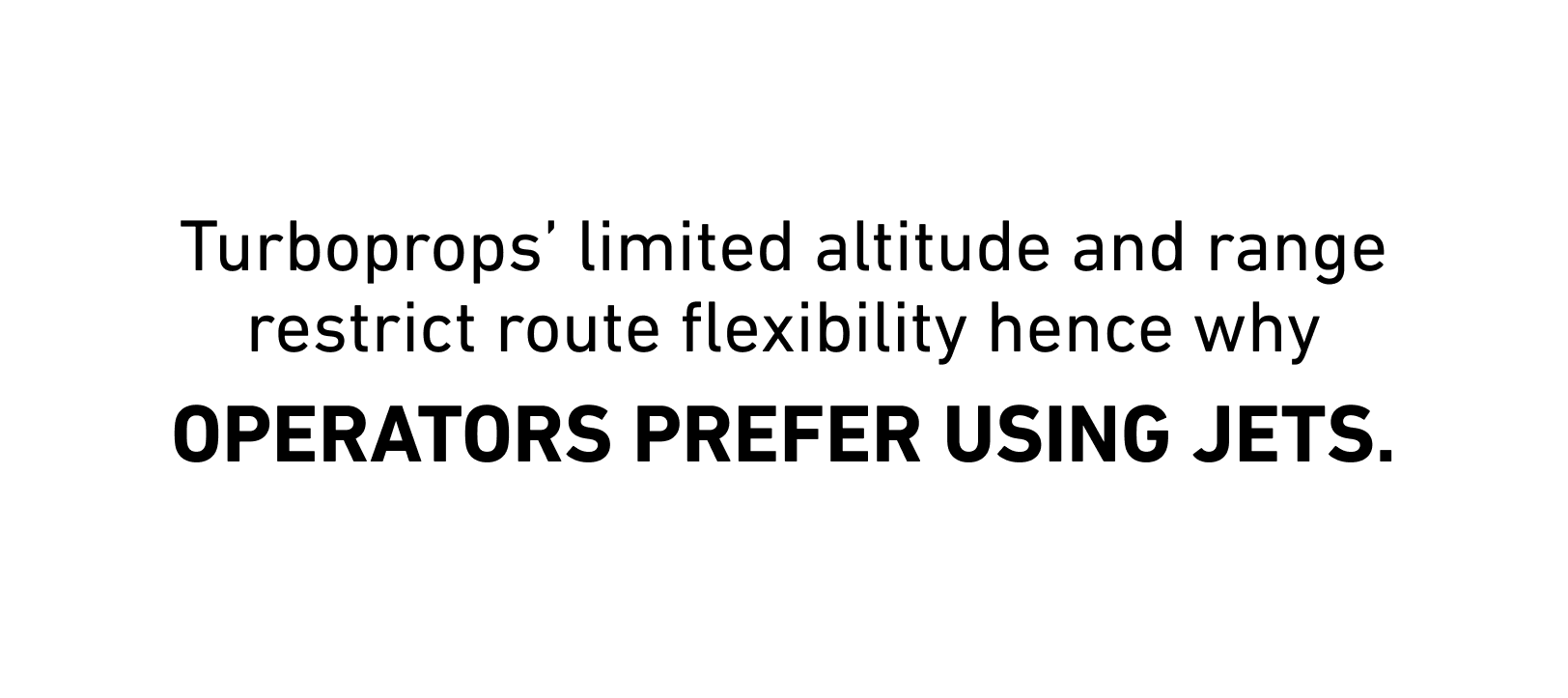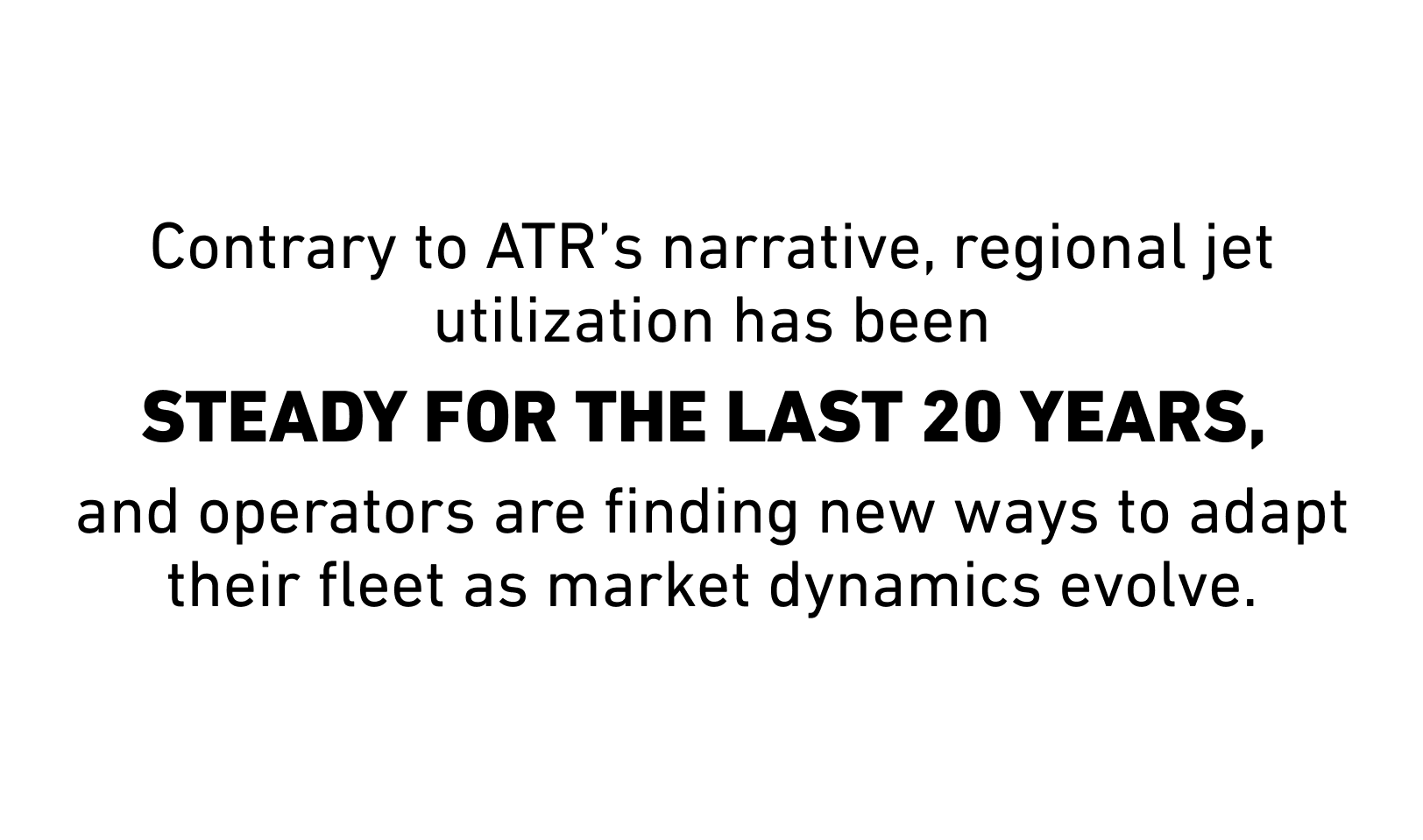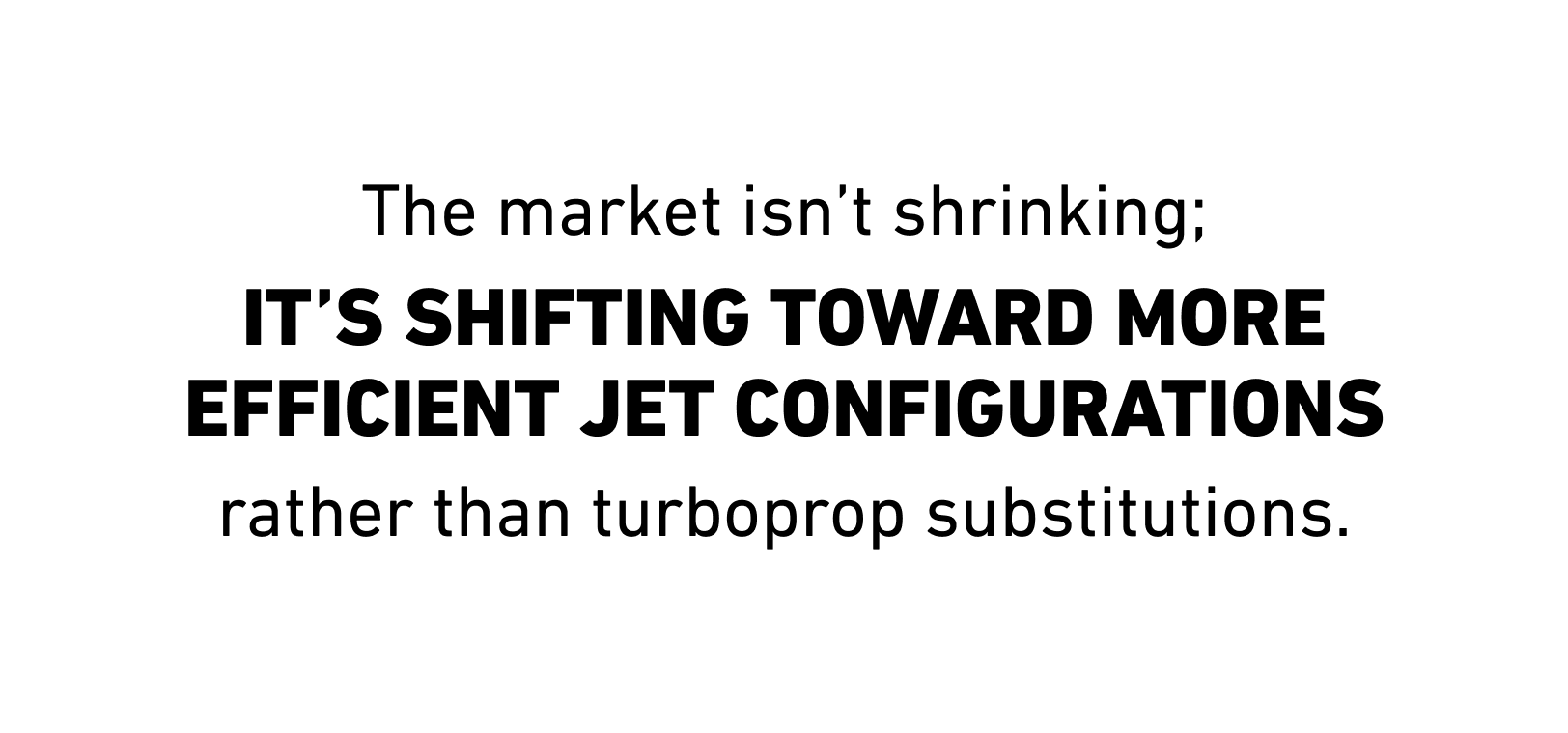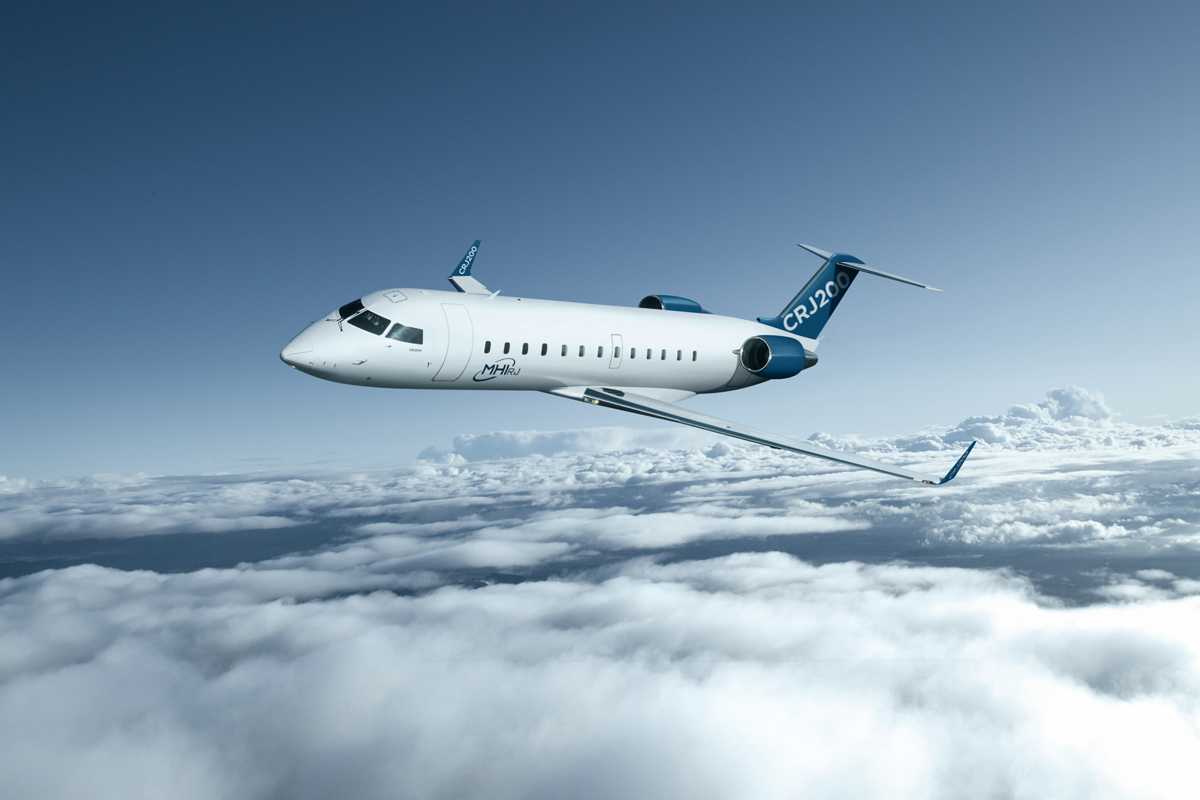
HOW WILL THE 50-SEATER FIT INTO THE FUTURE?

A snapshot of today’s situation clearly shows that the US 50-seater fleet is aging and is facing immediate risk of retirement. The COVID crisis might just precipitate things and accelerate the retirement rate. This raises the question of can we replace these aircraft, and how?
What is the future of the 50-seater market in the US post-COVID and can the Big 3 afford to lose $1B in annual revenue?
- Produced by MHIRJ Aero Advisory Services
Pre-COVID-19, the Big 3 (Delta, American, and United) flew a fleet of over 650 50-seater regional jets. This massive fleet has played the critical role of feeding hubs in their respective networks. During the current crisis, many of these aircraft have been parked and the question of their return to service is top of mind for many people in the industry. So, what does the future of the 50-seater market look like in the US post-COVID?
AN AGING FLEET
Bombardier and Embraer both have stopped production of their 50-seater regional jets a long time ago and no new program has been launched since then. The only aircraft still currently manufactured that would match the cabin size of these aircraft is the ATR42. But turboprop aircraft do not seem to be a desired solution for any of the Big 3. There is practically no appetite in the US market for turbo-propellers
Because of this lack of solution to replace the aging the 50-seater fleet, couldn’t the Big 3 simply drop these markets? The short answer is no.
FIGURE 1 - Status of the US 50-seaters fleet as of September 2020 (Source: CIRIUM Diio)
THE COSTS OF REMOVING THE 50-SEATER MARKET
Regional aviation and the 50-seater segment in particular is often misjudged when it comes to its revenue generation potential. The revenue allocated to the leg flown by regional aircraft is just the tip of an iceberg made of a substantial feed which supports the entire airline network. When considering the upstream revenue enabled by the feed, no less than 30% of the Big 3 revenue is dependent on regional aircraft operations (see figure 2). Simply pulling the plug of regional aviation is unrealistic. The exact same principles apply to the 50-seater market, removing them from the picture would mean ~$1B loss of revenue per year for Delta, American and United together.
FIGURE 2 - Big 3 Fleet composition, revenue, and dependent revenue (Source: CIRIUM Diio, September 2019 data)
TAKING BACK THE SKIES
Not all three Majors are impacted in the same way, but a more in-depth analysis of their networks and bases again emphasize the contribution 50-seaters bring at a network level (See figure 3 for examples). Removing them would lead to a snowball effect where other parts of the network (long-haul for instance) will suddenly not look as profitable as before.
FIGURE 3 - Network Contribution of 50-Seaters aircraft by base (Source: CIRIUM Diio, year 2018)
FIGURE 4 - 50-Seaters route sorted by frequency of operation (left = current status, right = realistic view if replaced by 76-seaters at iso-capacity)
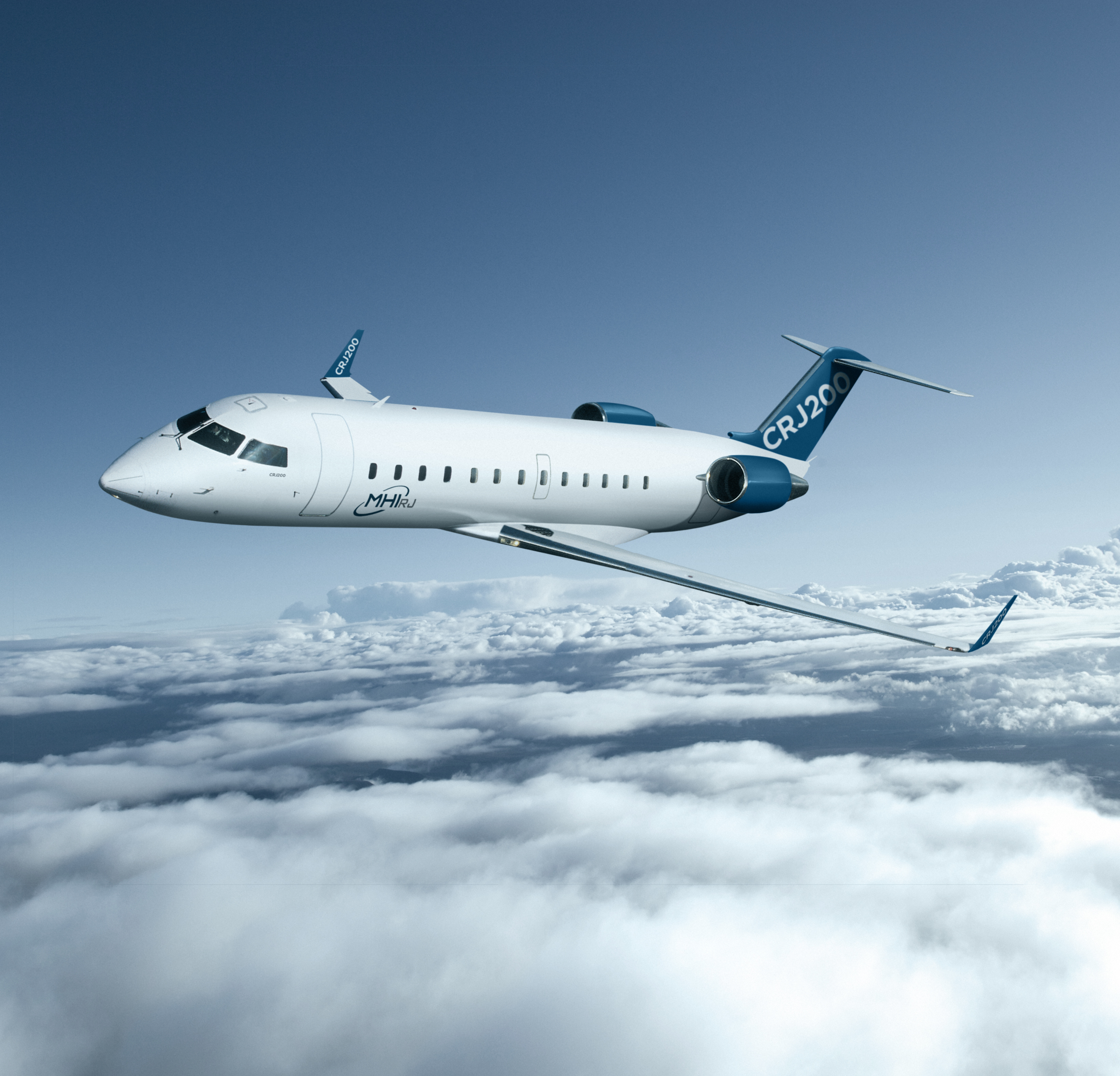
50-seat CRJ200 in flight
REPLACING 50-SEATERS WITH 76-SEATERS
For all the reasons explained above, and because no imminent replacement solution exists, it is very likely that the Big 3 will try to operate their 50-seater as long as possible. Eventually they will try to address this denser part of the network by replacing retired aircraft with available 76-seats regional jets.
The new question which arises is, can the entire 50-seater market be taken over by 76-seater aircraft? To answer this question, we must look to the current frequency offering on the 50-seater network (see figure 4 on the left). As explained above, the feed is a huge component (70% or more) of the traffic carried by 50-seater aircraft (see figure 5). It comes as no surprise that the average frequency on routes operated by small regional jets is high, which is done to optimize connections at the hubs. In order to preserve load factors, replacing 50-seater aircraft by 76-seater aircraft maintaining overall capacity will logically lead to frequency reductions
We can realistically assess that the routes maintaining at least a daily frequency after switching to large RJ operation will remain viable and as a result fall in the “Can besaved” bucket. On the other hand, a route that will fall below the critical threshold of a daily service can be considered lost (red column). Not only will the point-to-point traffic from these routes be lost, but the revenue generated on other legs thanks to the feed they bring to the network will be lost as well.
This is the first effect of the transfer of the 50-seater market to large RJ, but it is not the only one. Indeed, the average drop of frequency will also impact the quality and quantity of passenger connections and negatively impact the feeding traffic.
THE VALUE OF FEEDING THE NETWORK
If we look at the ratio of feed versus pointto-point traffic, we see that the higher the frequency, the more feed. This makes sense as more frequencies mean more possibilities to connect with more flights at the airline hub. Note the extremely high ratio of feed, beyond 80% on triple daily routes for Delta, hence the concept of iceberg we were referring to earlier: the value of the 50-seaters network resides in the feed they bring to the network.
Sadly, switching from a 50-seater operation to a 76-seater will lead to a reduction of frequencies, as we saw in figure 4. Consequently, we can also expect a degradation of the feed. Our estimates are losses of ~2% of the feed revenue for Delta, and 4% to 5% for American and United. Those estimates are calculated combining the loss of frequency detailed in figure 4 with the degradation of connection quality as seen in figure 5.
TOO IMPORTANT TO LET GO NOW
In conclusion, the 50-seater market is just too big for Delta, American, and United to simply pull the plug. It is too big, especially because of the importance of the feed it brings to the respective airline networks. As no replacement solution is currently to be found from the OEM side, and because a switch to larger RJ will have a negative impact on the revenue generation, the Big 3 will have no other choice than to fly the current 50-seater fleet as long as possible. Eventually they will try to switch this part of their network to 76-seater operations. While for most of the routes this seems feasible (see figure 4), many markets will have to be dropped. All-in-all, three streams of income loss have to be expected when this switch happens: loss of point-to-point traffic on dropped routes, loss of the feed originally generated by these dropped routes, and loss of feed because of degraded frequencies on remaining routes. The estimated loss of revenue due to these 3 factors were evaluated at respectively 5%, 10% and 6% of the 50-seater dependent revenue for Delta, American and United. Considering 2019 results, that would represent ~$130M per year for Delta, $380M for American, and $350M for United: a near billion US dollars of lost revenue per year!
Most likely the only way to preserve this revenue opportunity would be to replace the current 50-seaters with aircraft of similar or smaller cabin size. Could there be an electric solution? That’s a discussion for another day.
FIGURE 5 - Ratio of Feed versus Point-to-Point passenger - 50-Seater Network (Source: CIRUIM Diio, September 2019

In conclusion, the 50-seater market is just too big for Delta, American, and United to simply pull the plug. It is too big, especially because of the importance of the feed it brings to the respective airline networks.
- Log in to post comments

 24
24
